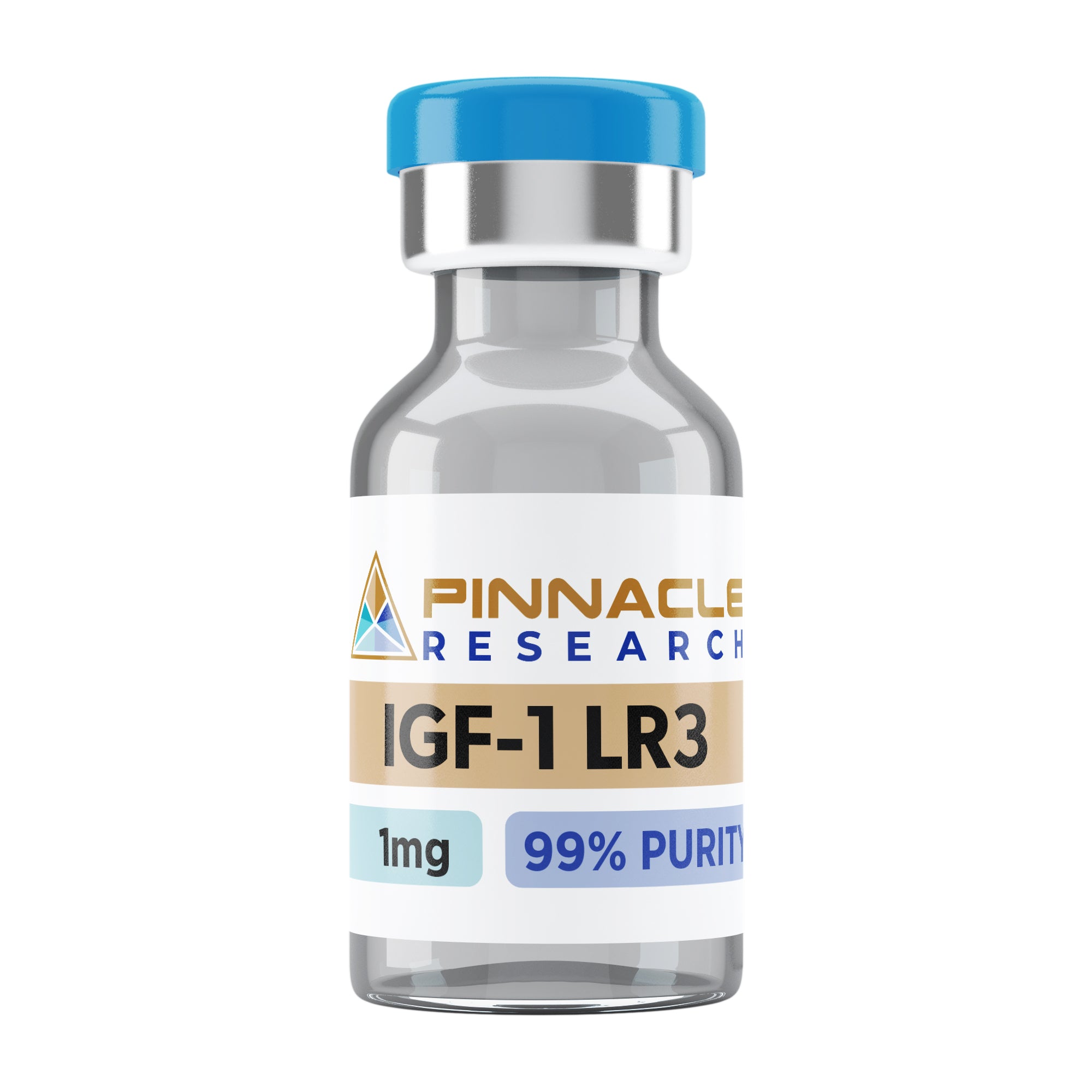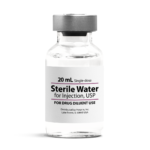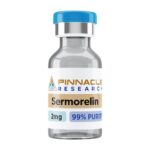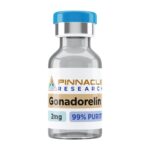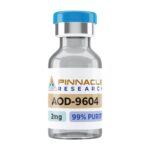About IGF-1 LR3
The IGF-1 LR3 peptide is a synthetic compound modified from the insulin-like growth factor-1. The compound remains active 120 times longer than the standard IGF-1. This feature of the IGF-1 LR3 peptide gives the peptide a longer half-life and increased activity. Research studies show that the IGF-1 LR3 peptide compound boosts fat metabolism, increases muscle repair and enhances body cell growth and division. Recent research studies show that IGF-1 LR3 can be used in enhancing lactation in mothers who have younger offspring.
What is IGF1-LR3
The full name of the IGF-1 LR3 peptide is insulin-like growth factor-1 long arginine three and its artificially modified version of the IGF-1 (insulin-like growth factor-1). All the modified derivatives of the insulin-like growth factor-1play an essential role in cell division, proliferation, and inter-cell communication. Despite the IGF-1 LR3 peptide possessing similar characteristics as the IGF-1, the derivative lacks IGF binding proteins. Therefore it remains in the bloodstream longer than the IGF-1, 120 times longer than its parent molecule. The extended half-life of the IGF-1 LR3 peptide is attributed to the peptide’s structural changes. During the construction of the IGF-1 LR3, 13 amino acids are added to the IGF-1’s N-terminal end. Then the glutamic acid at the 3rd position of IGF-1 is converted to an arginine residue.
Chemical Structure IGF1-LR3
- Sequence: MFPAMPLSSL FVNGPRTLCG AELVDALQFV CGDRGFYFNK PTGYGSSSRR APQTGIVDEC CFRSCDLRRL EMYCAPLKPA KSA
- Molecular Formula: C400H625N111O115S9
- Molecular Weight: 9117.5 g/mol
The IGF1-LR3 Research and Effects
Cell Division
The IGF1-LR3 compound has the same properties as its parent molecule, the IGF-1. Hence it has potent stimulus properties for cell proliferation and division. The primary effects of the IGF-1 LR3 peptide are on the connective body tissues like bones and muscles. Additionally, the peptide provides enhanced cell division in the kidney, liver, blood tissues, nerve, skin and lungs. Scientists prefer the IGF-1 as a more potent maturation hormone because it promotes cell proliferation and differentiation. It causes the body cells to mature faster and perform bodily functions more effectively.
Since the IGF1-LR3 stays in the bloodstream longer than the IGF-1, it is more potent than its parent molecule. A single dosage of the IGF1-LR3 peptide triggers three times cell activation as a similar dosage of the IGF-1. One key factor about the two peptides (IGF-1 and IGF1-LR3) is that they don’t enhance hypertrophy but promote hyperplasia. Hyperplasia refers to cell division and proliferation, while hypertrophy refers to cell enlargement. Therefore even though the IGF1-LR3 causes muscle cells to increase in number, it doesn’t trigger muscle enlargement.
Diabetes and Fat Metabolism
The IGF1-LR3 compound indirectly boosts fat metabolism by binding to the insulin receptor and IGF-1R receptor. The above actions trigger increased glucose uptake by the nerve, liver cells and muscle from the blood. Thus decreasing the overall sugar level content in the bloodstream. When the body has low sugar levels in the blood, the adipose and the liver are triggered to break down the triglycerides and glycogen. The final result is the body experiencing an adipose tissue decrease in energy consumption.
Since IGF1-LR3 has impressive blood-sugar level reduction capabilities, it is a reliable compound in dealing with diabetic conditions. The peptide significantly reduces the insulin levels in the body and eliminates the need for exogenous insulin in the body. Research studies show that the action leads to a 10% decrease in the insulin required to maintain normal blood sugar levels. Scientists are now focusing on these findings to develop effective ways of decreasing insulin in patients suffering from decreased insulin sensitivity and ultimately prevent diabetes 2.
Impairs Myostatin
The myostatin protein is a growth differentiation factor 8 and primarily inhibits the muscle cell’s growth and differentiation. Myostatin’s function is essential in regulating hypertrophy and ensuring proper healing when one is injured. However, there are instances when myostatin inhibition could be very crucial. Duchenne muscular dystrophy (DMD) is one of the scenarios when doctors would remarkably recommend the prevention of myostatin from functioning. The other scenario is when dealing with people suffering muscle loss caused by prolonged immobility. When myostatin is inhibited in the above scenarios, it slows down the muscle breakdown, thus staving off morbidity and maintaining muscle strength.
During DMD mouse model studies, researchers observed that IGF1-LR3 and other artificial derivatives of IGF-1 inhibit myostatin’s adverse effects, preventing apoptosis and protecting the muscles. Thanks to the long life of the IGF1-LR3 peptide, it proved to be the most potent peptide in inhibiting myostatin. Researchers observed that IGF1-LR3 inhibited myostatin by activating the MyoD muscle protein. The MyoD muscle protein is activated during tissue damage or workout sessions, and its primary role is muscle hypertrophy.
The IGF1-LR3 Longevity Research
Research studies confirm that IGF1-LR3 promotes body tissue repair and maintenance; hence it’s a protective molecule. It can protect the body cells from damage and aging effects. The test subjects in the research studies were pigs and cows, and it was observed administration of the IGF1-LR3 peptide helped in offsetting the aging effects. There are ongoing research studies on mice investigating whether the IGF1-LR3 peptide can be used in slowing down the progression of terminal illnesses like dementia, kidney disease and muscle atrophy. Observations from the study show that IGF1-LR3 can reduce disability and enhance long life.
Glucocorticoid Signaling
The adrenal glands primarily produce glucocorticoids. The artificially manufactured glucocorticoids reduce inflammation and control pain in neurological injury, cancer and autoimmune diseases. Despite having very effective results, glucocorticoids have some undesirable side effects like fat gain, bone density deterioration, and muscle wasting. Scientists are looking for innovative ways of using IGF1-LR3 to reduce the side effects caused by glucocorticoids.
The IGF1-LR3 peptide is one of the most potent derivatives of IGF-1, more substantial than its parent molecule. The compound stays longer in the bloodstream and achieves prolonged functionality thanks to its longer half-life. While past research studies have confirmed the great potentiality of the peptide, more research studies are ongoing to determine the effectiveness of IGF1-LR3 in reducing the effects of terminal illness and aging. While there are no studies on humans, research on mice revealed the peptide has low oral, excellent subcutaneous bioavailability and manageable side effects.
IGF1-LR3 is a potent derivative of IGF-1 with great potential to change the treatment therapies used in terminal illnesses. Even though the compound isn’t available for human consumption, you can use it for research and educational purposes.
